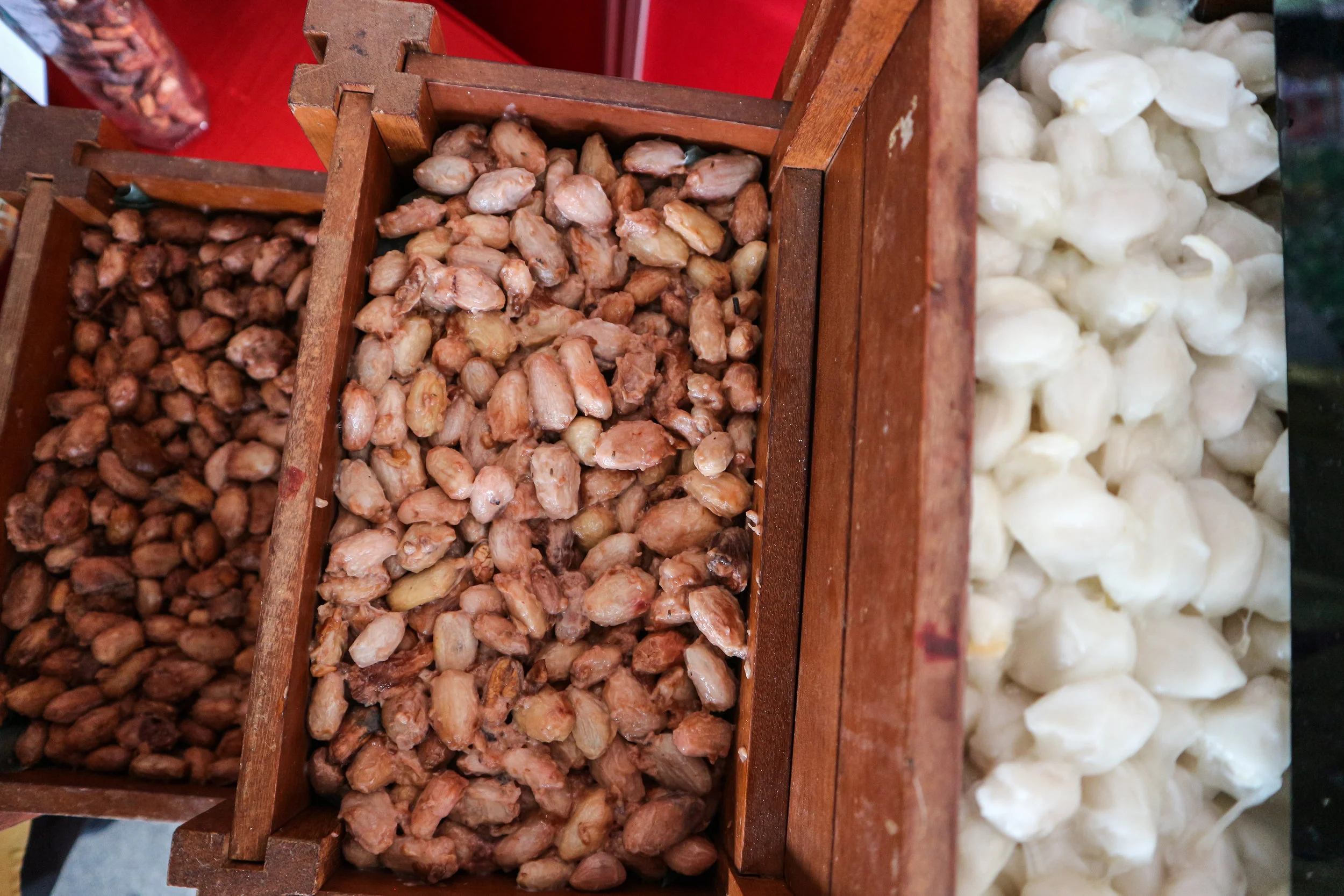Fermentation
Fermentation is a crucial step for flavor development in the final chocolate.
But what exactly is fermentation?
“Fermentation is a metabolic process that produces chemical changes in organic substrates through the action of enzymes." Source Wikipedia
Well.. doesn’t really help right?
Let’s take a closer look.
Beans and pulp are removed from the pod and placed either on a heap for heap fermentation or into a box for box fermentation. But the same reactions are happening in either process.
Heap fermentation:
Fresh beans and pulp are placed in a heap and covered with banana leaves. This is a method widespread among smaller plantations.
Box fermentation:
Fresh beans and pulp are placed in wooden boxes. Those boxes have holes, which provides ventilation and allow the water, produced from the beans and pulp, to run out. Each day the beans are getting tipped from one box to another to improve aeration (see picture).
The yeast from the air, as well as bacteria from the environment convert sugar from the bean and pulp to alcohol and carbon dioxide. Fermentation is an exothermic reaction, which means the reaction releases energy in form of heat.
This heat is necessary to kill the bean, so it won’t germinates (reminds me of Game of Thrones). The decreasing pH value, due to the development of acids have an impact on the beans death as well. Once the bean is killed, enzymes start to go to work. They rapidly decompensated the bean and pulp. Sugar and acids are developing, and those guys have a big impact on the chocolate flavor. The ventilation stimulates bacteria that require oxygen and encourages the production of ethanoic acid. Reactions that require oxygen, like the reaction between yeast and sugar are retarded and less alcohol is formed. Which means that box fermented beans are more likely to taste acidic compared to a heap fermentation.
But not only the sugar of the beans is converted.
Proteins are getting oxidized and as a result polyphenols occur, which gives chocolate its brown color (that’s why bananas become brown, too. If you want to learn more about polyphenol oxidase check out this article on Wikipedia). Another part of the proteins get broken down into amino acids, which are key player in flavor development.


